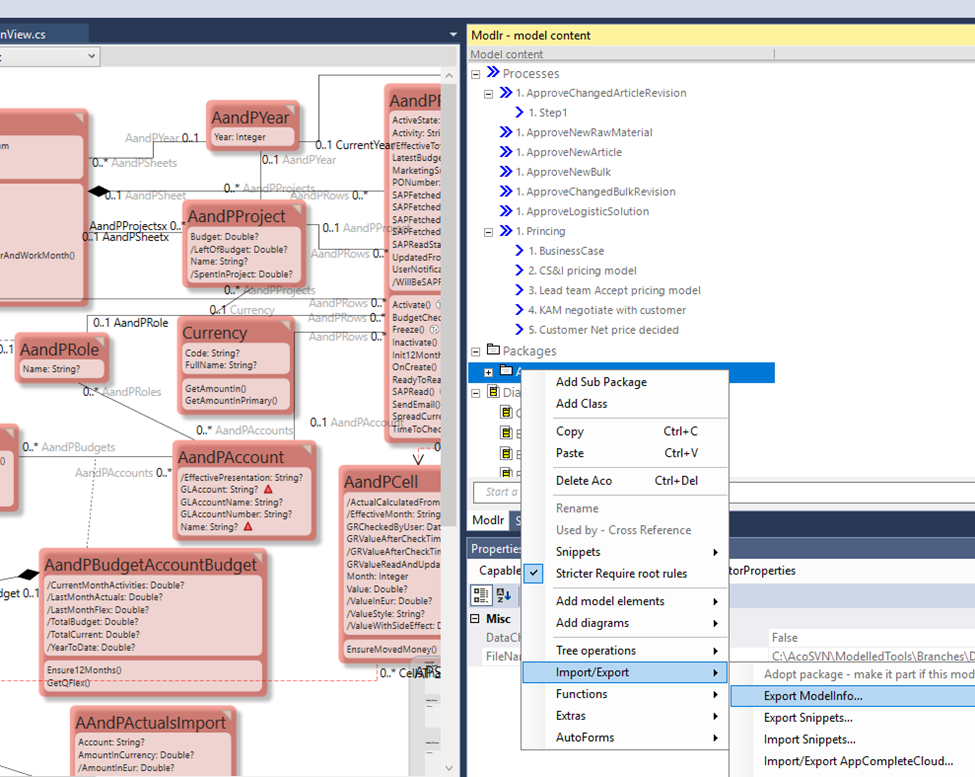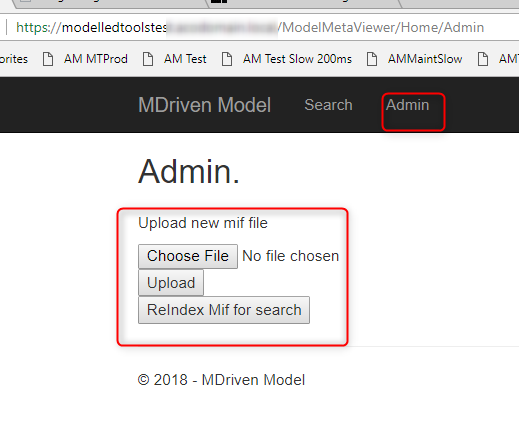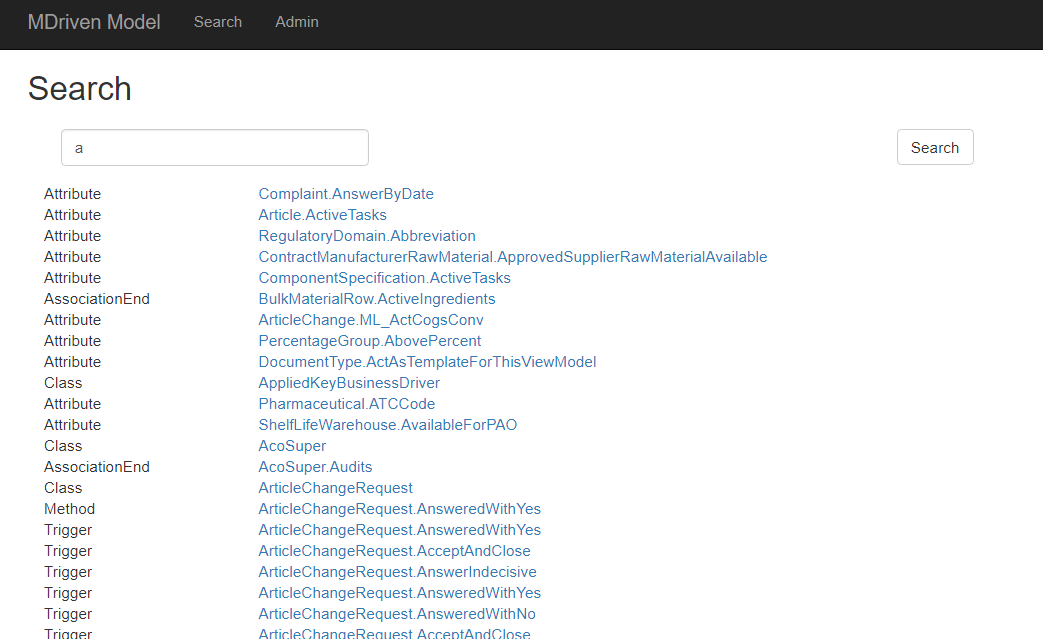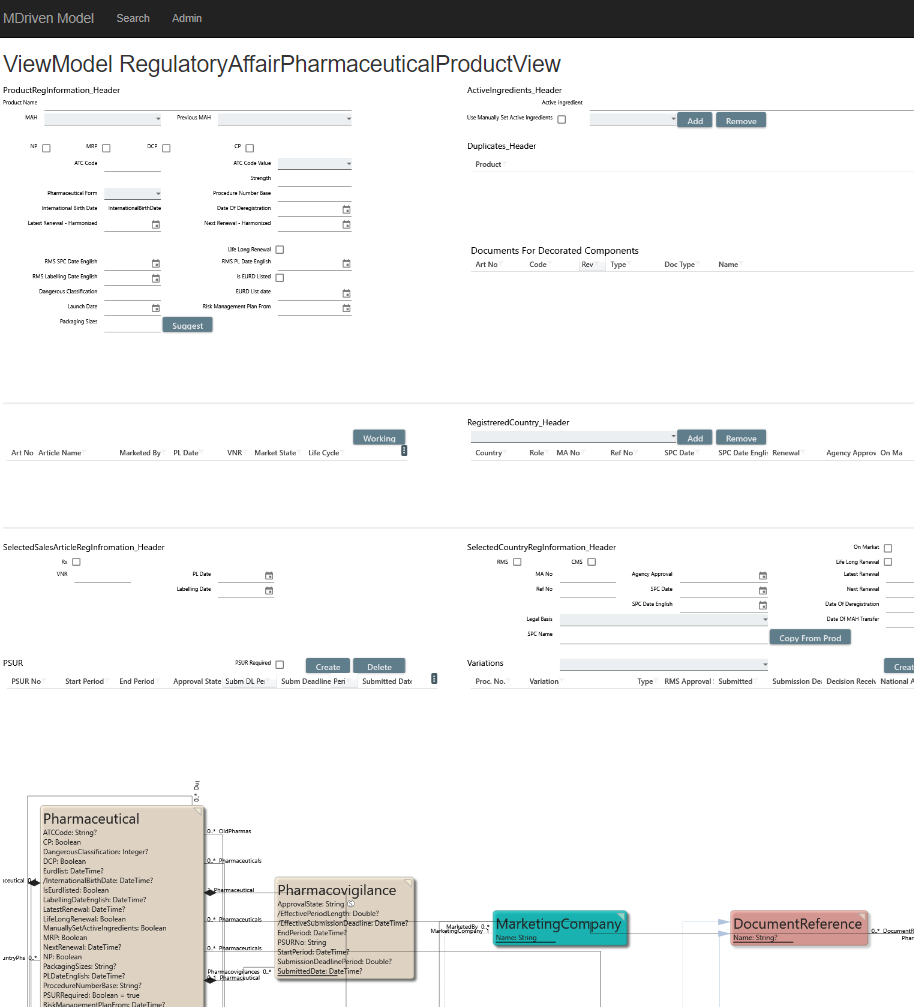(x) |
No edit summary |
||
| Line 3: | Line 3: | ||
Start by exporting a mif (Model Information File) file: | Start by exporting a mif (Model Information File) file: | ||
[[File:2018-08-23 15h17 30.png|none|thumb|975x975px]] | [[File:2018-08-23 15h17 30.png|none|thumb|975x975px]] | ||
This format takes the ViewModels, The Actions, The Classes and their content and The StateMachines and saves | This format takes the ViewModels, The Actions, The Classes and their content, and The StateMachines and saves it in a new type of ModelMeta model. It also analyzes each expression and makes notes on what each expression makes use of. This way the ModelMeta is a good cross-reference on what is used where. | ||
The mif file can then be uploaded to a ModelMetaViewer. I created a ModelMetaViewer in WPF but soon found that the real benefits come when you can consume the meta info from | The mif file can then be uploaded to a ModelMetaViewer. I created a ModelMetaViewer in WPF but soon found that the real benefits come when you can consume the meta info from the web instead of from a separate application. I then created the ModelMetaViewer as an MnVC web-application. | ||
You find the Web-install-package here https://www.mdriven.net/publicDownloads/ModelMetaViewerMVC4.zip | You find the Web-install-package here https://www.mdriven.net/publicDownloads/ModelMetaViewerMVC4.zip | ||
Revision as of 09:17, 15 December 2022
As your model grows you will find that it is a good tool to actually understand the business it supports. And as many people in the organisation would benefit of this understanding it is great to publish a read only version of the model for everyone to see.
Start by exporting a mif (Model Information File) file:
This format takes the ViewModels, The Actions, The Classes and their content, and The StateMachines and saves it in a new type of ModelMeta model. It also analyzes each expression and makes notes on what each expression makes use of. This way the ModelMeta is a good cross-reference on what is used where.
The mif file can then be uploaded to a ModelMetaViewer. I created a ModelMetaViewer in WPF but soon found that the real benefits come when you can consume the meta info from the web instead of from a separate application. I then created the ModelMetaViewer as an MnVC web-application.
You find the Web-install-package here https://www.mdriven.net/publicDownloads/ModelMetaViewerMVC4.zip
Once you have it installed you do to the admin tab and upload your mif file. Then you index the uploaded file:
Now you can search (we use a Lucene.Net.dll to index names + code comments)
And following a link to a viewmodel you get view + information usage:
The images have image maps and the user can follow to a single attribute or association end and see where else this is used and how to get there. As you can imagine this detailed self-organized meta information can reduce the support you need to provide for people that tries to navigate the system without the benefit of the model.




